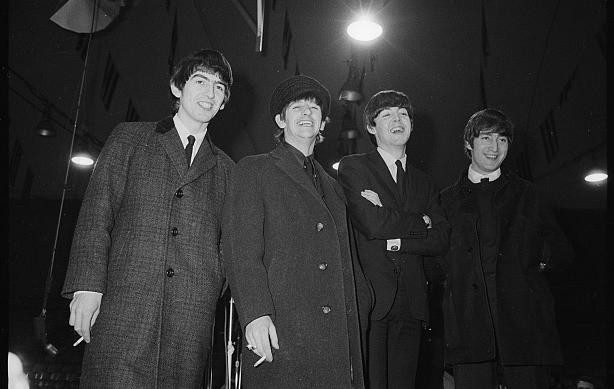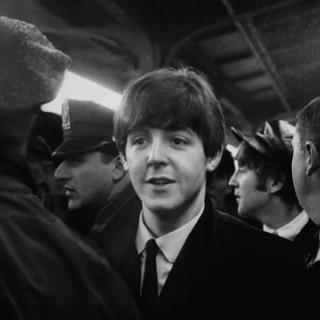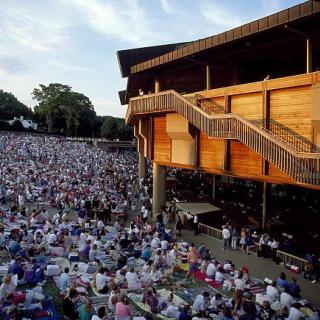They Got Here With a Little Help from Their Friends
Sometimes people make predictions that are so awful, so off the mark, so painfully wrong, that when you look at them in hindsight you almost can’t help but laugh. I hope you’re ready to laugh.
Exhibit A: “We don’t think the Beatles will do anything in this market.”[1]
Funny right?
That’s what executives at Capitol Records said about the Beatles in a memo back in 1963 — one year before the “fab four” descended from rock ’n’ roll heaven straight onto “The Ed Sullivan Show” and detonated an infectious explosion of adoration and affection for the young lads from Liverpool. We now remember this explosion fondly as “Beatlemania” and the “British Invasion” era of the mid sixties. At that time, Capitol Records owned the U.S. rights to the Beatles’ music, yet the record company had little faith in the band’s ability to succeed in America.[2] Despite being the most popular band in the U.K., Capitol Records dismissed the Beatles and had few plans to actively push them in the United States.
Luckily, for all of us, one young girl was bright enough to recognize the group’s talent, charisma, and potential in the American market. And, for music fans in the Washington area, it was pure serendipity that she was from Silver Spring, kicking off Beatlemania a little early in our nation’s capital.
On the night of December 10th, 1963, Sligo Junior High School ninth-grader Marsha Albert tuned in to watch “The CBS Evening News with Walter Cronkite.”[3] That night, the program aired a piece from CBS’s London Bureau — a report that was originally slated to run in November but got postponed a few weeks due to non-stop coverage of the assassination of President John F. Kennedy.[4] The report was a story on this young, new up-and-coming band taking over England.
Albert liked what she saw, but liked what she heard even more. "They had a scene where they played a clip of 'She Loves You' and I thought that was a great song," Albert later recalled.[5] “I couldn’t get it out of my mind and I wanted to hear more.”[6]
Albert decided to sit down and write a letter to WWDC, a local radio station and the only thing that her self-described “crummy little radio” could pick up. She told the station that she thought the band would be really popular here and asked if they could get one of their records.[7]
WWDC disc jockey Carroll James received the letter. James had also been watching Cronkite on Dec. 10 and Albert’s letter got him thinking. He had the station’s promotion director contact someone at the British airline BOAC (now called British Airways). A flight attendant delivered a British pressing of “I Want To Hold Your Hand” two days later, on Dec. 17.[8]
After securing the record, James called Albert and invited her to come down to the studio to introduce the song, its first-ever play on American radio.
WWDC’s switchboard lit up immediately. Fans called in to demand that the song be played again. And again. And again. WWDC happily obliged the requests and put the soon-to-be classic in heavy rotation.[9] In fact, WWDC was the only station playing the song because WWDC was the only radio station in the United States with a copy. Capitol Records had not yet released the record in America; they were planning to do so in a few weeks on Jan. 13, after the holiday season.[10]
Carroll James soon taped a copy and sent it to a fellow DJ and friend in Chicago, who then taped another copy and sent it to a fellow DJ and friend in St. Louis. Both cities reacted to the song in the same way D.C. had: they loved it.[11]
Capitol Records realized what was happening and, in order to capitalize on the growing excitement, decided to rush-release the single the day after Christmas — Dec. 26, 1963.[12] “Capitol had originally planned to press 200,000 copies; it pressed 1 million.”[13] Finally, the record company seemed to realize they had something special in their hands.
And so, with a simple letter, the stage was perfectly set for a British rock group to dominate the American music scene.
Beatles historian and author Bruce Spizer argues that “with 'I Want to Hold Your Hand' coming out the day after Christmas and kids being out of school, hearing it several times a day, having Christmas money and being able to go to the record store and buy the record at that time, all that propelled it up the charts much quicker than would normally have happened."[14]
When the Beatles arrived at JFK International Airport in New York on Feb. 7, 1964, they were greeted by thousands of screaming fans. When they went on “The Ed Sullivan Show” on Feb. 9, 73 million people tuned in.[15] Beatlemania was officially set in motion.
The group’s first stop after New York? Washington, D.C., of course.
On Feb. 11, the Beatles were welcomed into Union Station by a few thousand people, including Marsha Albert and the folks at WWDC.[16]
Before they performed at the Washington Coliseum, the lads sat down for a ten-minute interview with Carroll James in a WWDC mobile studio. Albert was invited to sit in. During the interview, James informed the Fab Four that it was Albert who wrote the letter to WWDC. John, Paul, George, and Ringo turned to her and said, “Thank you, Marsha.”[17]
Thank you, Marsha.
Footnotes
- ^ Harrington, Richard. “The Beatles' Helping 'Hand'; She Triggered Beatlemania in 1963 But Prefers Her Role to Be Unsung.” The Washington Post, 16 Jan. 2004, www.washingtonpost.com/archive/lifestyle/2004/01/16/the-beatles-helping….
- ^ Ibid.
- ^ Ibid.
- ^ Ibid.
- ^ Ibid.
- ^ Arak, Joel. “Girl Who ‘Found’ The Beatles in US.” CBS News, 7 Feb. 2004, https://www.cbsnews.com/news/girl-who-found-beatles-in-us/
- ^ Harrington. “The Beatles’ ‘Helping Hand.’”
- ^ Ibid.
- ^ Ibid.
- ^ Ibid.
- ^ Vries, Lloyd. “Beatles’ ‘Helping Hand’ Shuns Fame.” CBS News, 16 Jan. 2004, https://www.cbsnews.com/news/beatles-helping-hand-shuns-fame/
- ^ Ibid.
- ^ Harrington. “The Beatles’ ‘Helping Hand.’”
- ^ Ibid.
- ^ Ibid.
- ^ Ibid.
- ^ Vries. “Beatels’ ‘Helping Hand’ Shuns Fame.”






![Sketch of the mythical fuan by Pearson Scott Foresman. [Source: Wikipedia]](/sites/default/files/styles/crop_320x320/public/2023-10/Goatman_Wikipedia_Faun_2_%28PSF%29.png?h=64a074ff&itok=C9Qh-PE1)












